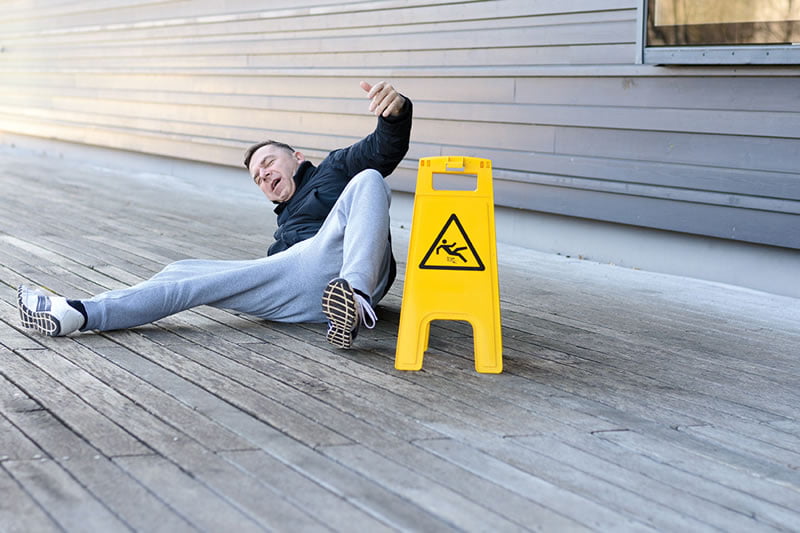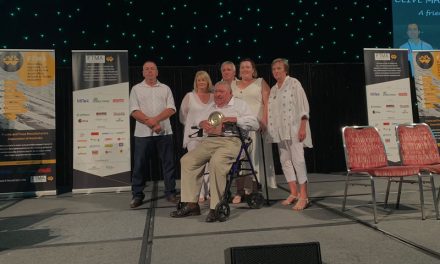The latest WoodSolutions publication is designed to help people keep their feet on timber floors, decking and stairs, inside and out, no matter what the conditions.
Every year over 1000 Australians are fatally injured in slips and falls. From home to worksites, and especially in public areas, slipping is a major cause of injury, and also of serious insurance claims.
Engineering and design responses can mitigate the risk in many cases, but best practice involves a lot of research to find which products and approaches actually deliver the results they promise and which ones have unintended side effects (such as only being temporary, degrading the surfaces on which they are used, or increasing slip risk in directions of traffic other than the expected.)
A new WoodSolutions technical design guide, Slip Resistance and Wood Pedestrian Surfaces, has been published to help people working in timber design take the guesswork out of providing the safest surfaces. An expert response, the guide looks at multiple scenarios and provides a range of suggested responses and their attendant issues. Legal and statutory requirements are discussed and practical recommendations are made for spotting risk and for lowering it.
Spotting slip risk
The guide opens with an extensive discussion re describing and measuring the risk of dangerous slips, and then factors that can increase risk, from well-worn shoes, to moisture and matter on timber surfaces (a particular risk for external applications or where water can be tracked in and those near, say, a crashed granite pathway), to wear and fungal coverage.
The physics of slips is examined in multiple scenarios, with particular attention paid to high-risk situations, such as stairs and slopes, and the problems posed by adjacent dissimilar materials.
While not all risk can be designed out, the guide provides an ideal checklist for assessing any environment to find problem areas, where alternative methods such as signage may be able to slow users and thus decrease the likelihood of slipping.
Designing for safety
The main body of the guide concerns itself with design-led responses to slip risk. The author, Rodney A Hunter, runs through a comprehensive list of real-world situations and provides responses to decrease risk, backed up by tested data.
Some of the results reinforce what timber designers, builders and landscapers already know – the effect of grain direction has a significant impact and is considerably more slip resistant for transverse movement across boards than for parallel traffic – others show surprising difference for small change – 20mm-wide boards with gaps between them in boardwalks were found to be 20% more slip resistant than 30mm boards, for example.
The impact of coatings is examined, as is the impact of adding slip-resistant fixtures or inserts or grit tape, along with the changed needs for regular maintenance when using additional safety products.
Integral board finishes are also discussed, including machine-roughened wood, reeded wood and multi-directional grain laying in areas with no fixed direction of traffic, though this last can sometimes increase slip risk at the change points.
National codes and legal obligations are covered in clearly accessible tables, along with a discussion of the testing methods that form the basis of the guide’s research and the codes.
While the guide does not set out to make definitive declarations of what solutions should be used in each circumstance, it more than meets its goal of arming the designer with the tools and information required to lower the risk of slips when using timber product. Each solution is also considered over time, with some providing an excellent response in early use, but leading to greater risk as they degrade, and so unsuitable for heavy-use areas.
WoodSolutions guides
This guide is Number 48 in WoodSolutions’ set of technical and training responses to issues in timber design and construction. It joins a distinguished list of publications well received by industry.
WoodSolutions is resourced by Forest and Wood Products Australia (FWPA – www.fwpa.com.au). It is a collaborative effort between FWPA members and levy payers, supported by industry bodies and technical associations. Guides are also supported by funding provided to FWPA by the Commonwealth Government.
The result is independent, industry-focused and non-proprietary information, written by industry experts, with free access through WoodSolutions registration.
For anyone working in the timber industry, the guides and the attendant data available on the WoodSolutions website offer a wealth of resources, along with industry news, research reports, podcasts, blogs, supplier links, case studies and opportunities for networking and involvement with current industry issues.
Popular topics covered by previous Technical Design Guides (all downloadable) include Timber-framed construction; Building with timber in bushfire-prone areas; Designing for durability; Timber finishes; Stairs, balustrades and handrails; Timber flooring and decking; Timber windows and doors; Fire compliance; Acoustics; and Thermal performance.
To download this technical design guide, visit www.woodsolutions.com.au/publications/slip-resistance-and-wood-pedestrian-surfaces. To register or learn about other guides, visit www.woodsolutions.com.au












